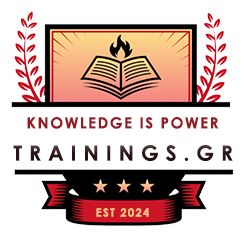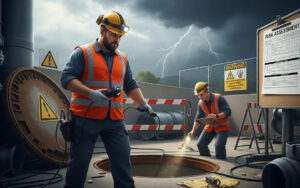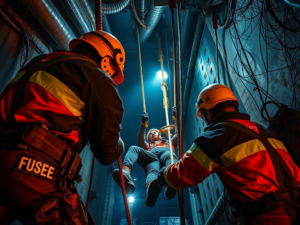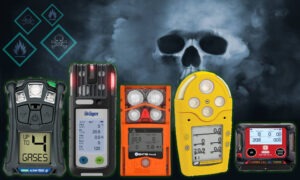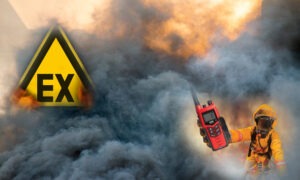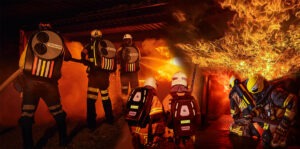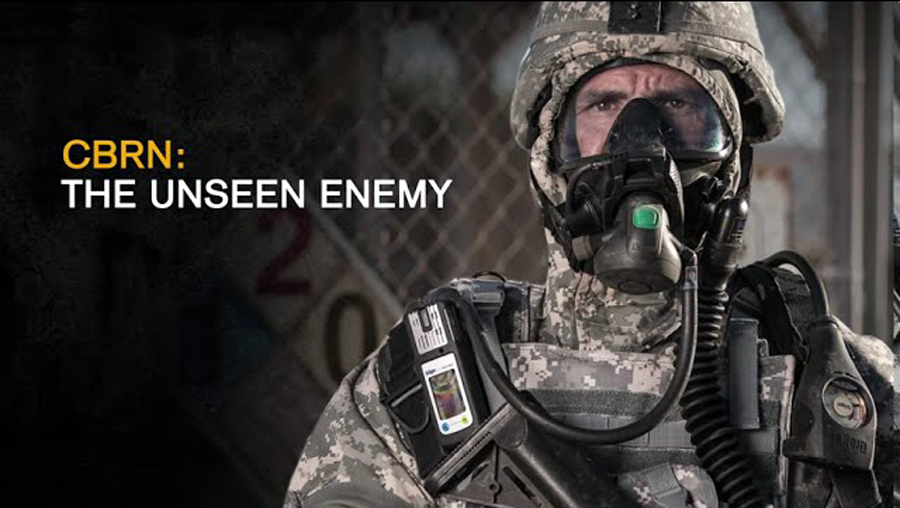
By John S. Retsios
Personal protective equipment, or PPE, is designed to provide protection from serious injuries or illnesses resulting from contact with chemical, radiological, physical, electrical, mechanical, or other hazards. Careful selection and use of adequate PPE should protect individuals involved in chemical emergencies from hazards effecting the respiratory system, skin, eyes, face, hands, feet, head, body, and hearing.
No single combination of protective equipment and clothing is capable of protecting against all hazards. Thus, PPE should be used in conjunction with other protective methods, including exposure control procedures and equipment.
In this article I will describe PPE needed for HazMat operations and CBRNE incidents.
PPE Main Categories
- SCBA = Self Contained Breathing Apparatus
The breathing apparatus must be approved according to EN 137 (2006) type 2.

All components of the SCBA must be arranged to minimize interference when maneuvering in confined spaces and when passing through small openings. Also, the components of the SCBA must be easily removed for routine service and maintenance. The breathing apparatus should accept a range of compressed air cylinders (steel, aluminum, carbon composite, or fully synthetic type 4) and have the option of twin cylinder configurations.
The back plate usually is a two-piece, anti-static composite construction with ergonomic design to evenly distribute the weight of the SCBA over the user’s lumbar region, hips, and shoulders. Some back plates have a 3 or 4 position multi height adjustment to customize the back plate to the wearer torso.
The back plate waist belt must be designed to move in a vertical up and down movement to provide maximum movement when bending forward and stretching. The waist comfort pad is automatically set in the correct donning position.
The waist pad is best to swivel from side to side by approximately 30 degrees to increase comfort and stability when moving. The shoulder and waist padding must be constructed from a high abrasion resistant, high puncture resistant, slip resistant chloroprene rubber outer layer. The shoulder and waist padding shall be chemical resistant and fire retardant.
The harness webbing shall be constructed of a heavy duty, high temperature resistant type material.
The shoulder pads must be designed with an ergonomic body contoured comfort style to maintain shape when worn, providing comfort and freedom of movement for the users. Wide for optimal support. Shoulder and waist belt harnessing must be independently adjustable. Shoulder and waist adjustment friction buckles must be made of stainless-steel construction. Each shoulder and waist harness padding must be easily detached from the back plate by a quick release button only. This will allow for easy cleaning and disinfection of the harness if required without the use of tools.
A cam-lock mechanism will be used to secure the cylinder strap in place to ensure simple and secure operation. The cylinder strap accommodates a complete range of sizes of cylinders without the use of tools.
The pneumatic system is usually easy to detach from the back plate and harness.
Medium and High-pressure hoses must be routed in hose channels inside the back plate to eliminate snag potential.

The SCBA has a first stage reducer which is connected directly to the backplate (described above) via quick fit connection for easy fitting and removal of the pressure reducer assembly from the backplate without tools. The first stage reducer has a standard DIN G 5/8-cylinder valve thread connection, or a cylinder quick connect coupling for 300 bar cylinders. (In case of 200 bars an alternative coupling must be selected)
The failure mode of the first stage reducer must be such that the reducer fails safe and always delivers air to the user. As an optional an airline secondary supply connection must be available to use SCBA as a supplied air respirator or use it as an emergency escape system.
The SCBA utilizes a mask mounted LDV (Lung Demand Valve). The regulator must be capable of being reset to the donning mode while connected to the SCBA to allow the user always to keep the mask in a ready position. The Lung Demand Valve is let preferred to be a plug-in version and positive pressure. Although there are other types of LDV’s in Europe, 75% use plug-in version. I strongly suggest the use of a specialized membrane on the LDV according to BS 8468-1 or NFPA CBRN standards. The use of an LDV holder will give the user the necessary space to secure the LDV when it’s not in use.
The full-face mask of the SCBA set is something simple but must be selected carefully. One of the factors to be considered is the approvals according EN 136 class 3, and in case of CBRN use I suggest following the BS 8468-1.
The new full-face masks have different sizes in the main body and at the inner mask. So, it’s up to you to select a full-face mask with one size fitted all or different sizes.New full-face masks have also a COM system attached giving the user the ability to connect to a group of users raising the safety awareness during the incident.
CPS = Chemical Protection Suits or CPC = Chemical Protective Clothing
Levels for CPS according to OSHA (A-D)
To help users choose a total PPE package, OSHA offers guidance on determining the four levels of chemical risks. These levels are adopted from the Environmental Protection Agency (EPA) and give a range from unknown or highly hazardous, which requires complete protection, to non-hazardous, which requires only basic work attire.

Level A protective equipment provides the highest level of skin and respiratory protection available. This type of protection must be gas-tight, vapor-tight and splash resistant. It is worn when there is a possible threat to life and health, such as during spill response and cleanup.
The minimum Level A equipment consists of:
- Positive pressure, self-contained breathing apparatus (SCBA) or positive pressure supplied air respirator with escape SCBA
- Totally-encapsulating chemical-protective suit
- Chemical-resistant inner and outer gloves
- Chemical-resistant bootswith steel toe and shank

Level B protective equipment offers chemical splash protection but does not prevent exposure to gases or vapors. As with Level protective clothing, an SCBA is used for respiratory protection. The CPC may or may not be completely encapsulating since a lower level of skin protection is required.
The minimum Level B equipment consists of:
- Positive pressure, self-contained breathing apparatus (SCBA)or positive pressure supplied air respirator with escape SCBA
- Hooded chemical-resistant clothing (overalls and long-sleeved jacket; coveralls; one or two-piece chemical-splash suit; disposable chemical-resistant overalls)
- Chemical-resistant inner and outer gloves
- Chemical-resistant boots with steel toe and shank
Level C protective equipment features the same type of clothing as Level B but has a lower level of respiratory protection. An air-purifying respirator is used in place of an SCBA. This level is used when the chemicals are known, and it has been established that an air-purifying respirator is appropriate protection for the hazard.
Level D protective equipment offers the lowest level of protection and is used when no potential or actual hazard exists. It consists of a normal work uniform (long sleeve coveralls, safety shoes, goggles, etc.), offering minimal protection for nuisance exposure.
Additional information on the four protection levels is given in OSHA 29 CFR 1910.120 Appendix B.
Note: In European Union mostly there is a different level of protection which means must be in accordance mainly with EN 943 regulation, let’s see what the levels are according to EU.
Levels for CPS according EN (1 – 6)Type 1 CPS, gas tight suits, are divided into several sub-types. Type 1a has a breathable air supply inside the chemical protective suit. The air supply can be e.g., self-contained open circuit compressed air breathing apparatus. In type 1b the breathable air supply is worn outside the CPS. In type 1c, a positive pressure of breathable air can be provided via air lines. Types 1a-ET and 1b-ET are meant for emergency teams. Type 1 CPS may be needed for example against dimethyl sulphate, ammonia, chlorine, cyanogen chloride, hydrogen cyanide, Sulphur mustard, or Sarin.
The leak tightness for type 1a, and for types 1b in which the facemask is permanently joined to the suit, is ensured with a test that measures how pressurized air is held by the suit. Type 1b suits which have facemasks that are not permanently joined to the suits must be tested with the same pressure test but also inward leakage test. The inward leakage shall not be greater than 0.05% when measured in the ocular cavity of the mask. Inward leakage test is also used for type 1c and type 2 suits.
Type 2 CPS are not gas tight and a positive pressure of breathable air is provided into the suit e.g., via air lines. The suits can be used against aerosols, sprays or gases, for instance in the manufacture of drugs or other hazardous materials, if the task requires that the employee stands still. (Type 2 is currently out of EN 943 so we do not count this type anymore)

Type 3 SPC (Splash protection coverall) has liquid-tight connections between different parts of the clothing. The SPC can be used in tasks where the contaminants are not airborne, chemicals may splash under pressure, or the workspace is confined, and the employee has to lean on contaminated surfaces. The type 3 SPC is not tested for leakage of a gas or particles, but it is tested for leaks by compressed jets of water. The materials can be the same or different as those used in type 1 or 2 CPS.
Type 4 SPC has spray-tight connections between different parts of the clothing. The SPC can be used in tasks where the contaminants are not air-borne, there is a risk of small splashes of chemicals, and the workspace is not confined. The type 4 SPC is tested by spraying it with water. The materials can be the same as for the type 5, but the seams are taped.
Type 5 SPC is intended for use against air-borne solid particles. It is often used to lessen the respiratory exposure such as those encountered in asbestos work and other tasks with hazardous dusts. The leak tightness of the suit is evaluated through two criteria. One special test is for the total inward leakage (TIL), i.e. the overall mean penetration through the suit while worn by test persons in sodium chloride aerosol atmosphere. The TIL can be used as laboratory-based efficacy measure for the SPC. For the type 5 SPC the TIL has to be less than 15% for 8 test persons out of 10. This is a factor to be seriously considered while selecting the type 5 clothing against hazardous chemicals.
Type 6 SPC is meant for tasks where limited protection against liquid chemicals is needed. The overall efficacy of the clothing is tested with a similar spray test as used in type 4 CPS, but with only 10% of the liquid load. The material efficacy against chemicals is measured in percentages, while the types 1–4 are classified in units of micrograms per square centimeters. The type 6 CPC should be only used against small and rare splashes of irritant substances.

Testing Differences
Emergency responders and industrial employees throughout the world prepare for similar real-life situations and as a result, many of the tests performed under EN 943 and NFPA 1991 certification are similar, including those for gas-tight integrity, flame resistance, and chemical permeation against many of the same toxic chemicals and gases. These tests seek to simulate actual scenarios, such as emergency responses, fires, chemical spills, and terrorist incidents with the release of poisonous gases or chemicals.
However, when comparing the two certifications, it is important to understand the different test methodologies and minimum performance requirements to ensure a suit provides the maximum protection for an intended application.
Detailed comparison of the test requirements results in five key areas of performance evaluation:
1. Chemical permeation testing. For chemical permeation testing, EN 943 and NFPA 1991 use the same test methodology. However, EN 943 has a less severe minimum permeation detection level of 1.0mg/cm2/min versus the NFPA 1991 level of 0.1mg/cm2/min. In addition, NFPA 1991 requires preconditioning prior to chemical permeation testing, while EN 943 testing does not. This means that NFPA 1991-certified materials are subjected to the physical stresses of both flexing and abrasion of outer surface with coarse sandpaper repeatedly before actual permeation testing. High-performance protective suits are NFPA 1991 certified, having been put through this rigorous abrasion preconditioning before chemical permeation testing, but other suits rely on an aluminum oversuit or cover to meet this requirement.
2. Gases and chemical warfare agents. NFPA 1991 chemical testing covers a much broader spectrum of chemicals than EN 943. It covers all the chemicals listed in EN 943 except for heptane and additionally specifies only one-tenth chemical permeation detection level requirements. NFPA 1991-certified suits are tested against 19 toxic industrial chemicals, six gases, and two warfare agents, while EN 943 covers 12 toxic industrial chemicals and three gases and does not test at all for chemical warfare agents.
3. Pressure testing. Gas-tight integrity — vital for any protective suit that may come into contact with toxic chemicals and gases — can be determined only by performing a pressure or inflation test and a leak detection test of the protective suit. This ensures not only that base suit material is gas-tight, but also that all seams and joints are equally gas-tight. This test typically involves closing off suit exhalation valves and inflating the suit to a specified pressure to observe whether or not the suit holds that pressure for a designated period of time. Both tests involve pre-inflating the suit at an elevated pressure; while this is only one minute for NFPA 1991, it is 10 minutes under the EN standard. More importantly, EN 943 features a six-minute test period at 1650 Pa (6.6 inches water pressure), while the NFPA 1991 test is for four minutes’ duration at 1000 Pa (4 inches water pressure). The standards are similar in not allowing any more than 20 percent loss of starting pressure during the test period, although actual results on suits in use should be well above these thresholds for maximum reliability.
4. Flame and flash resistance. EN 943 certification does not include any test for flash fire resistance and only requires very limited flame resistance (1 second). NFPA 1991 certification involves more rigorous flame and burn testing and has the optional test of flash fire resistance. Interestingly, some suits that meet the requirements of EN943-2 do not meet the NFPA 1991 standard unless they are equipped with a second aluminized oversuit, which significantly reduces comfort and dexterity and increases weight and bulk. Flash fire resistance is an optional requirement met by some suits. The test method includes putting the ensemble onto a mannequin in a sealed, propane-filled flash chamber. The suit is then subjected to a remotely ignited, six- to eight-second burn and must exhibit airtight integrity, thermal insulation, and visual acuity following the exposure to meet minimum standards, all in addition to the requirement for no after flame.
5. Hand protection. Protective suit accessories, such as visors, seams, and gloves, also need to be manufactured using highly protective textiles and materials. Both NFPA 1991 and EN 943-2 certifications require gloves to meet a high level of chemical and permeation resistance. NFPA 1991 has set much higher standards for cut and puncture resistance, which require that an outer glove be worn in addition to the chemical barrier glove. In most cases, two barrier gloves (a film inner and elastomer outer glove) are worn to obtain the full range of chemical protection and breakthrough times. However, innovative solutions are able to offer this puncture resistance and chemical permeation resistance in a single-piece construction.
Though unintentional, chemical industrial disasters and incidents happen and unfortunately CBRN terrorist acts are a real and ongoing reality. As a result, there is a wide variety of innovative protective suits and equipment on the market meeting a range of safety and performance standards. To keep emergency responders and industrial employees safe in the event that the use of PPE become necessary, it is critical to understand the various certifications, testing, and performance requirements. These factors will assist emergency service professionals and procurement groups to determine which suit is most appropriate for their needs, ensuring that emergency response teams and employees are able to do their jobs as safely and effectively as possible, EN 943 and NFPA 1991 are widely considered to be the global gold standards in PPE performance for gas and liquid-tight chemical protective clothing, but key differences need to be clearly understood. In order to ensure maximum protection that provides the highest level of safety for hazmat and emergency personnel, organizations and companies should specify suits that meet both EN 943 and NFPA 1991 and certification requirements.
Donning and Doffing
Proper donning and doffing of CPS will preserve the integrity of the PPE and protect the wearer from chemical exposure.
Level B, general advices
- Receive medical check (Optional)
- Verify that all PPE is ready and, in the dress, out area
- Perform an operational check of the SCBA (High pressure leak test etc.)
- Remove watches, jewelry, leather shoes and other personal items
- Don inner suit (Optional or comfort vest)
- Inspect suit
- Don Level B suit to waist.
- Don chemical resistant boots with boot covers.
- Conduct entry briefing.
- Don inner glove (Usually white cotton gloves)
- Don middle glove (if necessary)
- Insert arms into the sleeves of the suit and pulling it over shoulders.
- Gloves will be turned inside out over the thumb and palm of hand, then carefully taped making sure to stretch the elastic as far as possible and folded back over suit.
- Don chemical resistant outer gloves, and tape seam (preferred chemtape) between glove and suit leaving a tab
- Don facepiece. (Please use manufacturer instructions for secure fitting)
- Don attached hood of suit, zip up front zipper, attach zipper flap and tape flap leaving a tab.
- Don SCBA.
- Conduct a positive and negative pressure check of respirator facepiece.
- Don hardhat, if required (tape if needed).
- Assign suit number. (left arm, right foot, back)
- Rapid Intervention Team/Decon people to decon line.
- Connect regulator (LDV) to face piece and enters Hot Zone after Decon line is ready and IC approves.
- Ensure wearer is breathing air and indicates readiness with a thumbs-up sign.
Read here Part II: P.P.E. for HazMat operations and C.B.R.N.E. incidents, part II
*Mr. John Retsios is a professional trainer for HazMat and C.B.R.N.E. – P.P.E with an experience of more than 20 years in the field.
Bibliography
- Ahmstead, B.H. Manufacturing Processes. John Wiley and Sons, 1977
- How to choose the right PPE James P. Zeigler Ph.D.2007
- S. Department of Health and Human Services
- The National Personal Protective Technology Laboratory (NPPTL)
- DelValle Institute & Learning Center
- Grainger Institution for Safety
- Understanding EN and NFPA Standards for Chemical Protective Suits, Ian Hutcheson, 2012
- Protective clothing against chemical and biological hazards, Erja Mäkelä, Helena Mäkinen, Finnish Institute of Occupational Health
- Ansell S.
- Drägerwerk AG & Co. KGaA
- MSA the Safety Company
- Respirex International Ltd
- TESIMAX – Altinger GmbH
- DYNAT Verschlußtechnik GmbH
Acronyms
- CBRNE : Chemical Biological Radiological Nuclear and Explosive
- PAPR : Powered Air Purifying Respirator
- SCBA : Self-Contained Breathing Apparatus
- CCBA : Closed Circuit Breathing Apparatus
- LDV : Lund Demand Valve
- CPS : Chemical Protective Suit

